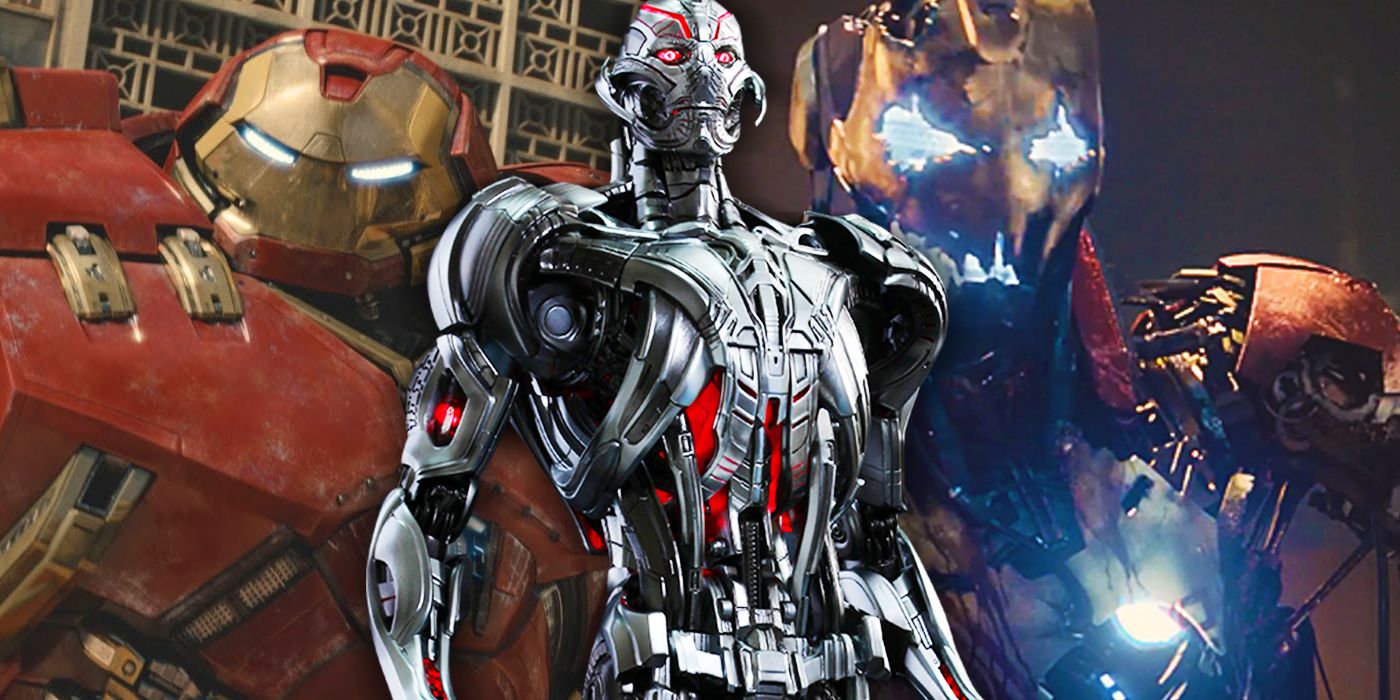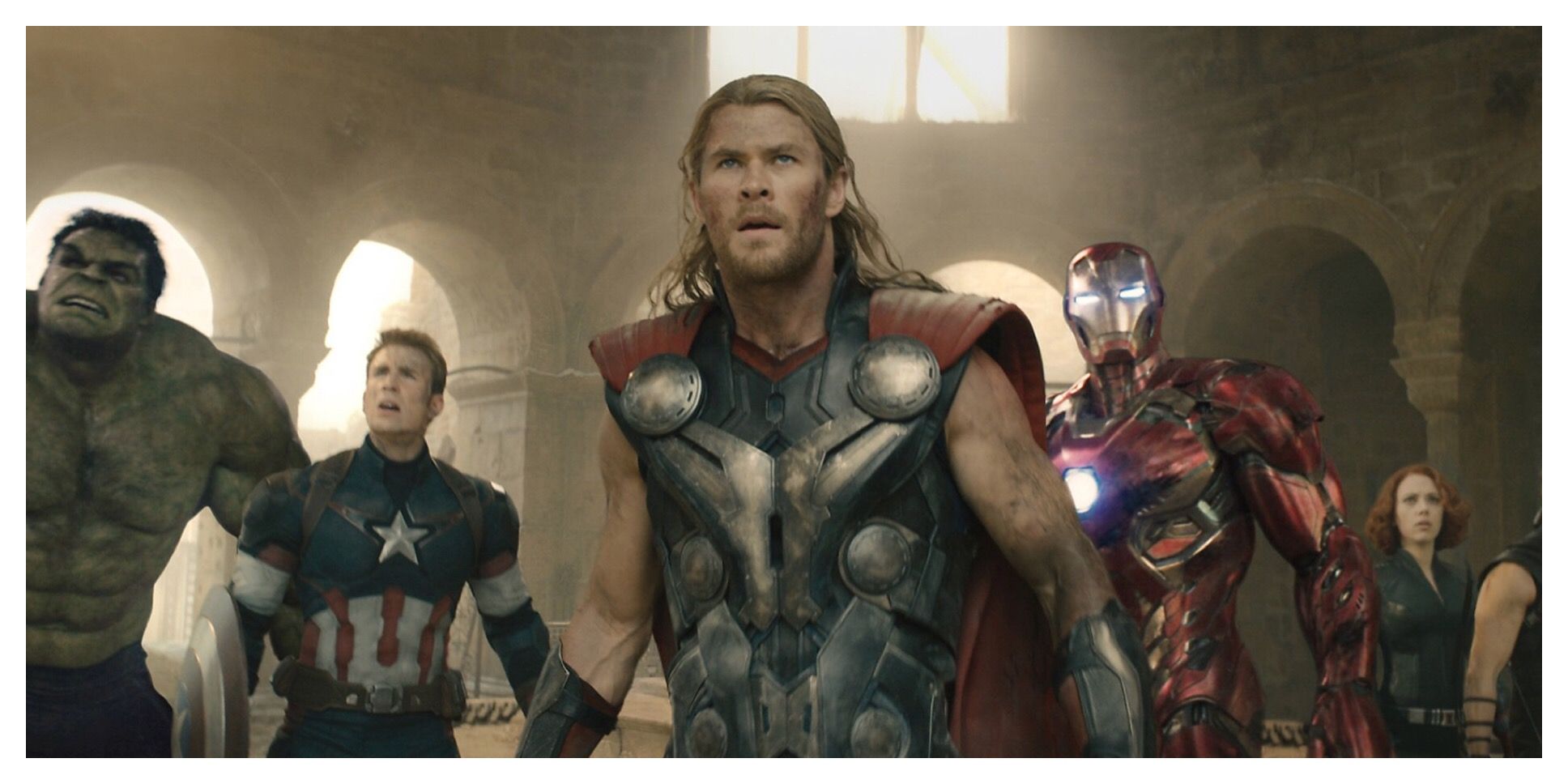Although 2015's Avengers: Age of Ultron isn't the lowest-rated installment of the Marvel Cinematic Universe -- that dubious honor belongs to Thor: The Dark World, if only barely -- it is the least acclaimed of the Avengers films. Despite its "Certified Fresh" status on Rotten Tomatoes, Age of Ultron was met with a degree of disappointment, perhaps in no smaller part because the Avengers sequel may very well have the MCU's best trailer.
Released in October 2014, the two-minute teaser trailer opens with a chilling voiceover from James Spader as Ultron, paired with images of screaming civilians -- including Wanda and Pietro Maximoff -- and of the Avengers looking defeated and broken. That then leads into the debut of Ultron's first body, the broken shell of a robot, as he introduces himself to the Avengers. The voiceover gives way to a truly haunting rendition of "I've Got No Strings," form Disney's Pinocchio, that ties into the genocidal robot's theme of, yes, cutting his strings. As the song plays, things don't appear any brighter for the Avengers as they each look as haunted as the song.
Then Tony Stark (Robert Downey Jr.) explains this is the end of the line of what he created, giving way to a series of shots that implies the Avengers may not make it out of Age of Ultron intact. There is clear in-fighting among the Avengers, signified by the introduction of Iron Man's Hulkbuster armor in the fight against the Hulk (Mark Ruffalo). With its imagery of Captain America (Chris Evans) lying on the ground with his broken shield by his side, the entire trailer has an ominous tone that feels totally different from that of 2012's The Avengers.
However, when Age of Ultron was released the following May, significant aspects of what the trailer promised weren't delivered. For example, that haunting tone doesn't really play out in the film, outside of Ultron's creepy, puppet-like introduction. The mood actually isn't too far off from the original Avengers (perhaps not a big surprise, considering both were written and directed by Joss Whedon). And story threads highlighted in the teaser, like Black Widow's past in the Red Room, are barely referenced. The trailer seemed set up the Avengers to, if not lose against Ultron then at least lose members. In the end, Aaron Taylor-Johnson's Pietro Maximoff, aka Quicksilver, is the only casualty, and while the Avengers may have been shaken, the story ends with the team stronger than ever.
Perhaps if there had been a different version of that trailer, setting up different expectations, we wouldn't be so hard on Avengers: Age of Ultron. However, that problem isn't limited to this film, or even to the MCU. There are plenty of examples of misleading trailers that use strategic editing to create a version of what the film could be rather than what's ultimately seen in theaters. Trailers are their own art form, presented with their own challenges; they're frequently assembled using limited footage, before production is complete and long before the final edit. Although that can result in amazing trailers, like Age of Ultron's, sometimes they work against the film because of the disconnect with the final product.
Avengers: Age of Ultron isn't the greatest MCU film, but it arguably has the franchise's best trailer (which is certainly saying a lot). Unfortunately, that set high expectations for an Avengers sequel that, ultimately, wasn't meant to be.


